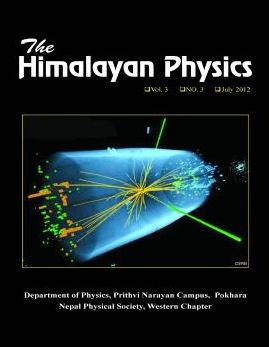Contamination of Trichloroethylene in Drinking Water System and Its Degradation
DOI:
https://doi.org/10.3126/hj.v3i0.7269Keywords:
Photolysis, Sonolysis, TCE concentrationAbstract
Photolysis and sonolysis of trichloroethylene (TCE) in water was investigated using a cup-horn, flow-through reactor system. Water containing titanium dioxide was deliberately contaminated with TCE. These solutions were irradiated with ultraviolet light (UV) and ultrasonic waves (US). The decrease in the TCE concentration was observed in water under both US and UV treatments. Present findings declare that the use of UV and US decreased the TCE concentration. With the reactor specifications used, the photolysis and sonolysis processes can produce water meeting the drinking water standard (MCLs of 5?g/L) for TCE.The Himalayan Physics
Vol. 3, No. 3
2012
Page : 13-17
Downloads
Download data is not yet available.
Abstract
818
PDF
1459
Downloads
Published
2012-12-26
How to Cite
Adhikari, D. L., Sato, C., & Lamichhane, S. K. (2012). Contamination of Trichloroethylene in Drinking Water System and Its Degradation. Himalayan Physics, 3, 13–17. https://doi.org/10.3126/hj.v3i0.7269
Issue
Section
Articles
License

The articles published in the Himalayan Physics are distributed under a license CC BY-NC-SA 4.0.




